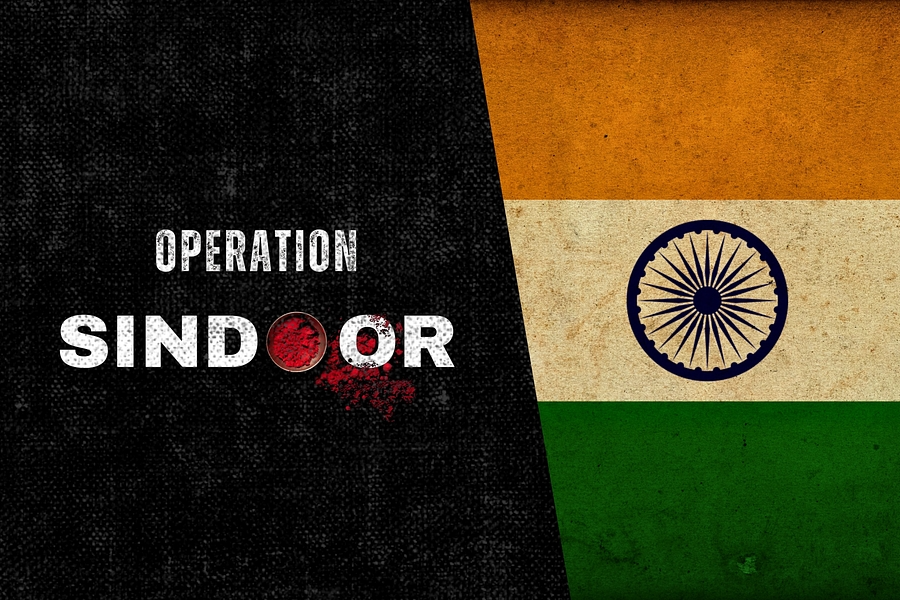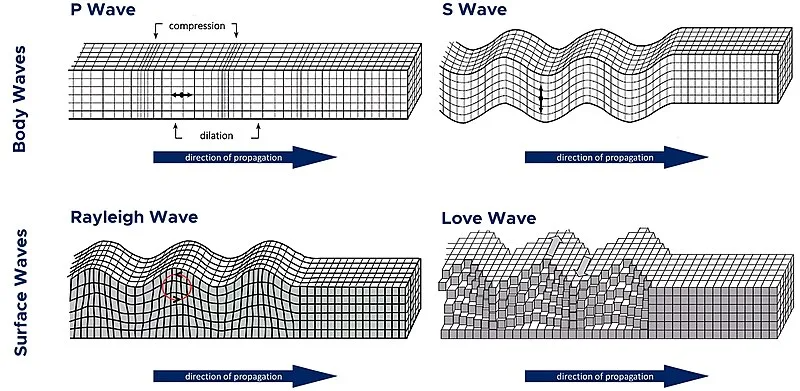August 07th Current Affairs
Table of Contents
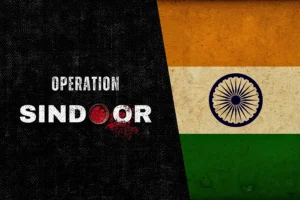
Operation Sindoor
July 21st Current Affairs Home / Operation Sindoor Why in News? Parliament’s Monsoon Session, starting July 21, 2025, is expected to feature
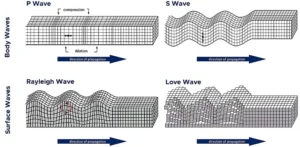
Alaska Earthquakes
July 21st Current Affairs Home / Alaska Earthquakes Why in News? On July 21, 2025, Alaska Peninsula was struck by

August 2, 2027 Solar Eclipse
July 21st Current Affairs Home / August 2, 2027 Solar Eclipse Why in News? A total solar eclipse is set
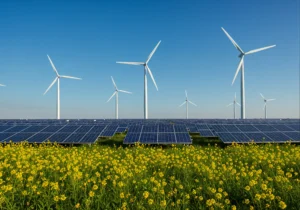
India’s milestone in clean energy transition
July 21st Current Affairs Home / India’s milestone in clean energy transition Why in News? India achieved a milestone by

‘Baby Grok’, child-friendly AI app
July 21st Current Affairs Home / ‘Baby Grok’, Child-friendly AI app Why in News? Elon Musk’s AI company xAI has announced
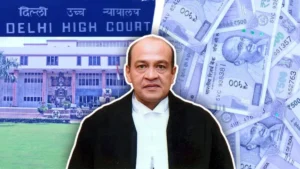
Impeachment proceedings against Justice Yashwant Verma
July 22nd Current Affairs Home / Impeachment proceedings against Justice Yashwant Verma Context On July 22, 2025, impeachment proceedings against
Election Notification for Vice-President Issued
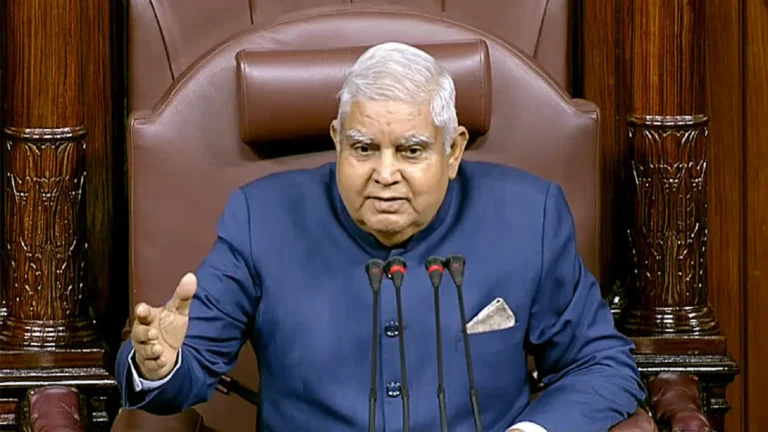
Context
On August 7, 2025, the Election Commission of India (ECI) issued a notification for the Vice-Presidential election scheduled for September 9, 2025, following the resignation of Jagdeep Dhankhar on July 21, 2025, due to health reasons. The nomination process has begun, and political dynamics are unfolding rapidly.
Background
Jagdeep Dhankhar’s resignation two years before the end of his term (2022–2027) created a vacancy that necessitates a mid-term Vice-Presidential election. His resignation was unexpected and came amidst political churnings at both the central and state levels. The last Vice-Presidential election was held in August 2022.
Constitutional Provisions
Articles 63 to 73 of the Constitution of India govern the office of the Vice-President:
- Article 63: There shall be a Vice-President of India.
- Article 66(1): Election of the Vice-President by Proportional Representation through Single Transferable Vote (STV), using a secret ballot.
- Article 67: Term of office—5 years; the VP may resign before the term ends.
- Article 68: Election to fill a vacancy should be held as soon as possible.
Laws Governing the Election
- Vice-President’s Election Act, 1952
- Conduct of Elections Rules, 1961
- Provisions related to the eligibility criteria, such as:
- Must be a citizen of India
- At least 35 years of age
- Not holding any office of profit
- Eligible for election as a Rajya Sabha member
Supreme Court cases
- Indira Nehru Gandhi v. Raj Narain (1975): Affirmed the principle of free and fair elections as part of the basic structure doctrine.
- Kuldip Nayar v. Union of India (2006): Upheld the law abolishing the secret ballot for Rajya Sabha elections but emphasized that the secret ballot must continue for Presidential and Vice-Presidential elections as per the Constitution.
Reasons behind the Resignation
- Jagdeep Dhankhar cited health concerns, but political observers suggest possible internal party dynamics or realignments within the party.
- Resignation ahead of major state and general elections raises speculations about strategic moves by the ruling alliance.
Significance of the Office
- The Vice-President is the ex officio Chairperson of the Rajya Sabha, responsible for maintaining order and decorum.
- Acts as President in the event of the latter’s absence, death, or resignation until a new President is elected.
- Plays a critical role in legislative proceedings and serves as a bridge between the executive and legislature.
Definition of Technical Terms
- Proportional Representation (PR): A voting system where candidates are elected in proportion to the number of votes received.
- Single Transferable Vote (STV): A system where electors rank candidates by preference. If no one gets a majority, votes are transferred as per the next preferences until a candidate wins.
- Office of Profit: A position that brings financial gain or advantage and may conflict with public duty, thereby disqualifying a person under constitutional provisions.
Legality
- A mid-term VP election gives the new incumbent a fresh 5-year term, unlike the Presidential vacancy, where the successor only completes the remainder of the term.
- The VP can resign by writing to the President, and no impeachment process exists, unlike for the President.
Political implications
- With the NDA holding a majority (422 out of 786), the election outcome seems predictable, but internal party choices will signal coalition dynamics.
- It offers the ruling party a chance to project a key figure nationally, possibly preparing for a larger role in future leadership.
Challenges
- Ensuring free, fair, and transparent conduct amidst political polarization.
- Managing opposition unity, especially as the role of VP is often contested based on symbolic representation.
- Handling parliamentary disruptions, where the VP, as Rajya Sabha chai,r plays a pivotal mediating role.
Way Forward
- Greater transparency in nomination processes.
- Institutional reforms to make the VP’s role more functional and less ceremonial.
- Ensuring that the VP’s office strengthens parliamentary democracy through neutrality and effective floor management.
Prelims MCQ
Q. Consider the following statements regarding the Vice-President of India: 1. The Vice-President is elected through a direct election involving both Houses of Parliament and State Legislatures. 2. The election uses a proportional representation system by means of a single transferable vote and a secret ballot. 3. The Vice-President can continue in office even after the expiry of the term until the successor assumes office. Which of the above statements is/are correct?
A. 1 and 2 only
B. 2 and 3 only
C. 1 and 3 only
D. 1, 2, and 3
Statement 1 is incorrect: The Vice-President is elected only by members of both Houses of Parliament (Lok Sabha and Rajya Sabha), not by state legislatures. This is unlike the Presidential election, where the Electoral College includes state assemblies.
Statement 2 is correct: Article 66(1) provides that the election shall be held following the system of Proportional Representation by Single Transferable Vote, and the voting shall be by secret ballot.
Statement 3 is correct: As per Article 67, the VP can continue beyond the five-year term until the successor enters office, ensuring no constitutional vacuum.
Mains Question
Q. The Vice-President of India plays a vital constitutional role beyond ceremonial functions, especially as the Chairperson of the Rajya Sabha. Discuss in light of the recent midterm election. (250 words)
PM Modi Likely to Visit China for SCO Summit – First Visit in 7 Years

Context
Prime Minister Narendra Modi is expected to visit China’s Tianjin from August 31 to September 1, 2025, to attend the Shanghai Cooperation Organisation (SCO) Summit. This would mark his first visit to China since 2018, and comes amid shifting geopolitical alignments, India-China border tensions, and strained India-US trade relations. A bilateral meeting with Chinese President Xi Jinping is likely on the sidelines.
Background
- India-China tensions have persisted since the LAC standoff in May 2020, following Chinese incursions in eastern Ladakh.
- Multiple rounds of diplomatic and military talks led to disengagement in November 2024, after a meeting between Modi and Xi in Kazan (October 2024).
- Despite disengagement, de-escalation and de-induction remain incomplete, with 50,000–60,000 troops deployed on both sides.
- China’s military support to Pakistan during Operation Sindoor in May 2025 has further complicated bilateral ties.
- Yet, bilateral efforts like reviving the Mansarovar Yatra, easing visa restrictions, and planning direct flights show intent to stabilize relations.
UN Provisions and Diplomatic Conduct
While the UN does not directly intervene in bilateral border disputes between sovereign nations, the following UN principles are relevant:
- Article 2(4) of the UN Charter prohibits the threat or use of force against the territorial integrity of states.
- UN General Assembly Resolution 2625 emphasizes peaceful settlement of disputes and non-intervention.
- Confidence-building measures (CBMs) and bilateral mechanisms align with the UN’s broader framework for international peace and stability.
Reasons
- Reassert India’s regional leadership in the SCO amidst Russia-China strategic deepening.
- Open channels for bilateral dialogue with China to resolve remaining border deployment issues.
- Signal strategic autonomy to the US and West amid tensions over tariffs and Russian oil imports.
- Leverage multilateral diplomacy to de-risk India’s position amid growing China-Pakistan military alignment.
Significance of the Visit
- A visit after 7 years will recalibrate bilateral optics and regional perceptions.
- May open the door to gradual normalization, setting a roadmap for future cooperation.
- Offers a strategic counterbalance to China’s influence within the SCO, where India has often played a contrarian voice.
- Reaffirms India’s “Act East” and “Neighbourhood First” diplomacy in a multilateral setting.
Definition of Technical Terms
- SCO (Shanghai Cooperation Organisation): A political, economic, and security alliance founded in 2001 by China, Russia, and four Central Asian nations. India and Pakistan joined in 2017.
- De-escalation: Reducing military tensions by withdrawing forces, reducing deployments, and easing surveillance operations.
- De-induction: Full-scale removal of troops and machinery from a high-tension zone back to peacetime locations.
- Operation Sindoor: A recent Indian military operation during which Chinese support to Pakistan was uncovered.
Diplomatic
- India’s presence reflects a multi-vector foreign policy, balancing relations with the West, Russia, and China.
- While participating in SCO, India maintains its QUAD commitments with the US, Japan, and Australia.
- A bilateral meeting could act as a confidence-restoring measure after years of confrontation.
International Relations
- If successful, the visit may reduce tensions and prevent further militarization along the border.
- It may strengthen India’s standing in Eurasia, countering China’s strategic reach through BRI and military diplomacy.
- It could improve India’s energy and trade security amid Western restrictions on Russian oil and global trade volatility.
- Possibility of joint India-China statements on multilateralism, BRICS cooperation, or regional security.
Challenges
- Mistrust persists over the LAC crisis and Chinese activities in PoK and Nepal.
- China’s alignment with Pakistan militarily and diplomatically is a core strategic concern.
- SCO’s dominance by China-Russia reduces India’s influence in agenda-setting.
- Risk of domestic political criticism over engaging with an adversary despite unresolved border issues.
Way Forward
- Define clear red lines in bilateral dialogue with China.
- Push for institutional reforms within the SCO to allow equal footing for all members.
- Use the SCO platform to build a coalition of consensus on terrorism, regional security, and connectivity.
- Keep strategic engagements multi-aligned and avoid zero-sum alignments.
Prelims MCQ
Q. Consider the following statements regarding the Shanghai Cooperation Organisation (SCO): 1. The SCO is a military alliance headquartered in Beijing. 2. India and Pakistan became full members of the SCO in 2017. Which of the above statements is/are correct?
A. 1 only
B. 2 only
C. Both 1 and 2
D. Neither 1 nor 2
Mains Question
Q. India’s participation in multilateral organizations like the SCO reflects its pursuit of strategic autonomy and multi-alignment in foreign policy. Critically examine in the context of current India-China dynamics. (250 words)
Trump Doubles Tariffs on India Over Russian Oil Purchases

Context
On August 6, 2025, US President Donald Trump signed an executive order doubling tariffs on Indian goods to 50%, citing India’s continued import of Russian oil despite ongoing US sanctions against Moscow. The action was taken under the International Emergency Economic Powers Act (IEEPA) and other statutory provisions. India responded sharply, calling the move unjustified and unreasonable.
Background
- Tensions between India and the US have escalated over energy trade with Russia, especially since the beginning of the Russia-Ukraine war in 2022.
- India has maintained a neutral stance, purchasing discounted Russian oil to stabilize its energy security amid global price volatility.
- The first 25% tariff was imposed earlier by Trump; the latest order raises this to a total of 50% on Indian goods.
- The move mirrors Trump’s broader protectionist trade policy, already visible in previous US-China and US-EU trade confrontations during his first term (2017–2021).
WTO and UN Provisions
- WTO (World Trade Organization):
- Tariff increases must comply with Most Favoured Nation (MFN) and Non-Discrimination principles (Articles I & II of GATT).
- Exceptions can be invoked under Article XXI (Security Exceptions) to justify such measures in times of national emergency.
- UN Charter:
- The Charter promotes peaceful international trade and discourages unilateral coercive economic measures that may destabilize global cooperation.
Trump invokes the IEEPA and National Emergencies Act to justify these trade measures as a response to a continuing national security threat—Russia’s war in Ukraine and India’s economic engagement with Russia.
Legal Framework in the US
- IEEPA (50 U.S.C. 1701 et seq.): Grants the President authority to regulate international commerce after declaring a national emergency in response to any unusual threat.
- National Emergencies Act (50 U.S.C. 1601 et seq.): Authorizes the declaration of national emergencies.
- Trade Act of 1974, Section 301: Permits retaliatory tariffs against countries deemed to practice unfair trade or actions against US interests.
Reasons behind the Tariff Hike
- Strategic pressure: The US seeks to reduce global dependency on Russian energy to isolate Moscow economically.
- Domestic politics: With elections approaching, Trump aims to appeal to protectionist sentiments and industrial lobbies.
- Perceived trade imbalance: Trump accuses India of benefitting disproportionately from trade while ignoring US sanctions.
- Signal to allies: Sending a strong message to other US partners to comply with Western sanctions against Russia.
Significance of the Move
- Signals the fracturing of India-US economic ties, especially amid growing India-Russia energy engagement.
- Reflects a return to unilateralism and economic nationalism in US foreign policy under Trump.
- Tests India’s resolve to maintain its strategic autonomy while dealing with both the West and Russia.
Definition of Key Terms
- Tariff: A tax or duty to be paid on a particular class of imports or exports.
- Ad valorem duty: A tariff levied as a percentage of the value of goods.
- IEEPA: Law allowing the US President to regulate commerce during national emergencies.
- Most Favoured Nation (MFN): A WTO principle requiring equal trade terms for all partners.
- Section 301: A legal tool allowing the US to retaliate against unfair foreign trade practices.
Geopolitical Nuances
- The tariff hike is not just economic—it’s deeply strategic, aimed at influencing India’s foreign policy decisions.
- Comes at a time when India is engaging China at the SCO, balancing QUAD commitments, and handling volatile borders.
- Reflects the clash of priorities: the US emphasizes sanctions enforcement, while India prioritizes energy security and strategic non-alignment.
Impact on Bilateral Relations
- Tariffs may reverse trade normalization achieved during the Biden administration.
- Potential retaliation by India through a WTO complaint or counter-tariffs.
- Impacts key Indian sectors exporting to the US: textiles, pharmaceuticals, and engineering goods.
- May slow ongoing talks for an India-US Trade Agreement or FTA.
- It could complicate cooperation in Indo-Pacific security, climate policy, and technology sharing.
Challenges
- Balancing strategic energy needs with geopolitical alignments.
- Navigating domestic political expectations in both countries.
- Avoiding escalation into a full-fledged trade war.
- Sustaining diplomatic dialogue in multilateral forums like the SCO, G20, and UN.
Way Forward
- India must pursue diversification of energy sources to reduce vulnerability.
- Engage the US through Track 1.5 diplomacy and back-channel discussions.
- Explore WTO arbitration to assess legal remedies.
- Strengthen regional trade partnerships (e.g., with ASEAN, EU, and Africa).
- Reaffirm commitment to rules-based multilateralism while asserting strategic sovereignty.
Prelims MCQ
Q. Consider the following statements regarding the International Emergency Economic Powers Act (IEEPA):
1. It allows the US President to regulate foreign trade during a declared national emergency.
2. It requires prior approval of the US Congress before tariffs are imposed under it.
Which of the above statements is/are correct?
A. 1 only
B. 2 only
C. Both 1 and 2
D. Neither 1 nor 2
Statement 1 is correct: The IEEPA (50 U.S.C. 1701 et seq.) empowers the US President to regulate trade and impose sanctions during a national emergency that threatens US national security, foreign policy, or the economy.
Statement 2 is incorrect: The President does not require prior congressional approval under IEEPA. He can act unilaterally after declaring a national emergency. However, Congress can review or terminate such declarations.
IEEPA is often used to freeze assets, restrict trade, and impose tariffs in geopolitical crises—e.g., sanctions on Iran, Russia, and now, trade measures against India.
Mains Question
Q. India’s strategic autonomy is increasingly challenged by external economic coercion. Discuss in the context of recent US tariffs on Indian exports over its oil trade with Russia. (250 words)
Bangladesh to Hold Parliamentary Elections in February 2026
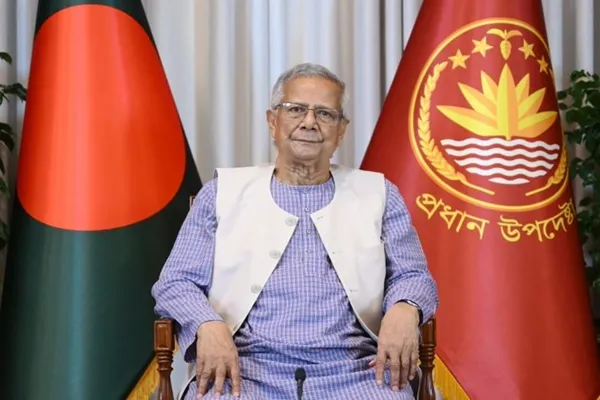
Context
On August 5, 2025, Muhammad Yunus, the Nobel laureate and current Chief Adviser of the interim government, announced via state broadcaster BTV that Bangladesh’s national elections will be held in February 2026, ahead of the Islamic month of Ramzan. The announcement comes on the first anniversary of the “July Uprising” that led to the ousting of former PM Sheikh Hasina.
Background
- The “July Uprising” of 2024 was a student-led pro-democracy movement that culminated in the resignation of the Awami League-led government under Sheikh Hasina.
- The movement alleged electoral rigging, suppression of dissent, authoritarianism, and human rights violations.
- Following Hasina’s exit, an interim technocratic government was installed, led by Muhammad Yunus, to steer the country towards constitutional reforms and free elections.
- The “July Declaration”, a 26-point reform agenda, has been unveiled by the interim government addressing governance, decentralization, judicial independence, and electoral transparency.
UN Provisions
- Under UN General Assembly Resolution 2625 (1970) and the Universal Declaration of Human Rights, Bangladesh should:
- Ensure free and fair elections.
- Uphold freedom of speech, assembly, and association.
- Guarantee political participation for all citizens.
- As a member of the UN Human Rights Council (UNHRC) in previous years, Bangladesh has committed to promoting democratic transitions and institutional integrity.
Legal Framework in Bangladesh
- Bangladesh follows a parliamentary democracy governed by its Constitution of 1962.
- Article 123(3) of the Constitution allows for elections to be held within 90 days of the dissolution of Parliament.
- The Caretaker Government System was abolished in 2011, but the current regime serves in a de facto caretaker capacity, awaiting elections.
- The Election Commission is empowered to conduct free and fair elections, but concerns remain over its independence.
Reasons for the Early Election Declaration
- Political Legitimacy: Establishing electoral legitimacy post-regime change is critical for domestic and international recognition.
- Public Expectation: Citizens, especially the youth who led the uprising, are demanding a rapid political transition.
- Ramzan Consideration: Scheduling before the start of Ramzan allows for maximum voter participation and minimizes logistical challenges.
- Pre-emptive Stability: Declaring early polls helps in managing political narratives and curbing potential opposition unrest.
Significance
- Marks the first democratic election post-Hasina era, potentially ending years of one-party dominance.
- Enhances Bangladesh’s international image amid criticism from Human Rights Watch and others.
- It could be a model of people-powered regime change, akin to the Arab Spring uprisings, if peaceful and successful.
- Sets a precedent for youth-led democratic accountability in South Asia.
Definition of Key Terms
- Chief Adviser: In the Bangladeshi context, refers to the head of an interim or technocratic government during electoral transition.
- Interim Government: A temporary administrative setup to facilitate elections and manage state affairs neutrally.
- July Uprising: Popular term for the 2024 student-led movement against the Awami League government.
- Ramzan (Ramadan): The ninth month of the Islamic calendar, marked by fasting.
Geopolitical Nuances
- India-Bangladesh relations will be impacted by the nature and outcome of the elections.
- The Awami League has historically maintained warm ties with New Delhi; a new government might reassess border and trade dynamics.
- Rising China-Bangladesh cooperation, particularly in infrastructure, may influence strategic realignments.
- Western countries, including the US and EU, will likely link aid and trade to democratic performance and human rights benchmarks.
Impacts on India’s Border States, SAARC & BIMSTEC
Border States:
- West Bengal, Assam, and Tripura could witness:
- Cross-border tensions or migration if unrest resumes.
- Changes in border security cooperation and illegal trafficking dynamics.
- Shared river issues (Teesta, Ganga) could be revisited under a new government.
SAARC & BIMSTEC:
- A democratically stable Bangladesh strengthens BIMSTEC’s regional agenda.
- SAARC has been dormant due to India-Pakistan tensions; a stronger Bangladesh could push for its revival.
- Bangladesh’s future alignment (India vs China) could reshape intra-regional balances.
Challenges
- Security threats from residual Hasina loyalists and extremist groups.
- Risk of political polarization during the campaign season.
- Weak institutional independence (judiciary, Election Commission).
- Delay in fulfilling human rights promises, as flagged by HRW.
- Ensuring free media and digital expression amid tight surveillance.
Way Forward
- Empower an independent Election Commission with full transparency and oversight.
- Encourage participation of youth and women, as highlighted by Yunus.
- Facilitate inclusive political dialogues with all major parties, including those sidelined under Hasina.
- Regional actors like India should pursue constructive engagement, not interference.
- International observers should be invited to ensure electoral credibility.
Prelims MCQ
Q. Consider the following statements about the political transition in Bangladesh:
1. The 2024 “July Uprising” was primarily led by workers and farmers demanding land reforms.
2. The interim government under Muhammad Yunus has proposed political and constitutional reforms through the “July Declaration.”
Which of the statements is/are correct?
A. 1 only
B. 2 only
C. Both 1 and 2
D. Neither 1 nor 2
Statement 1 is incorrect: The July Uprising was primarily student-led, focused on democratic reforms, electoral transparency, and removal of authoritarianism—not agrarian land reforms.
Statement 2 is correct: The “July Declaration” outlines 26 points, calling for governance, constitutional, and judicial reforms. It criticizes the Awami League and proposes institutional restructuring.
This highlights a critical shift in Bangladesh’s political landscape from elite-controlled governance to youth-led participatory politics.
Mains Question
Q. The transition of power in Bangladesh reflects the evolving nature of democratic movements in South Asia. Critically examine the implications for regional stability and India’s strategic interests. (250 words)
Fake Residence Certificate in Trump’s Name
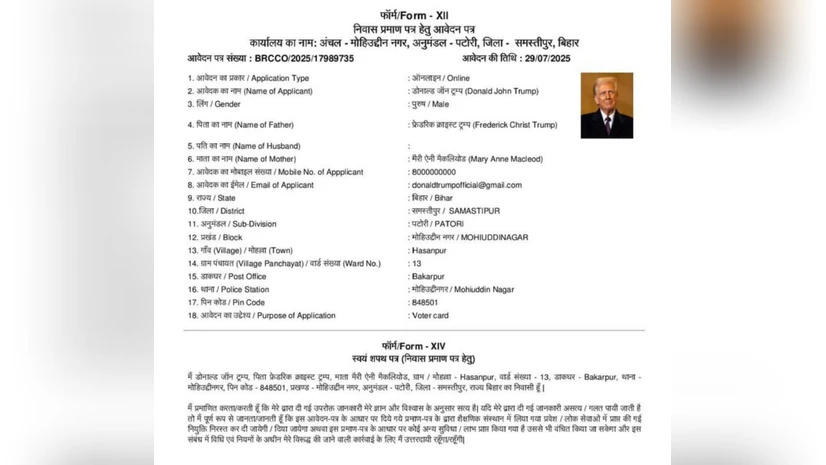
Context
In late July 2025, during the ongoing Special Intensive Revision (SIR) of electoral rolls in Bihar, an online application was submitted in Samastipur district to create a residence certificate in the name of Donald Trump, complete with a tampered Aadhaar photo, barcode, and local address. Officials rejected the application and promptly referred the case to the cyber cell, registering an FIR.
Background
This incident is not isolated — earlier, the state witnessed similarly absurd cases: a certificate issued for “Dog Babu” (a dog), and bogus applications with names like “Shri Ram,” “Mata Sita,” a crow, “Sonalika Tractor,” and even “Samsung”. These incidents reveal systemic lapses in the digital governance framework under Bihar’s Right to Public Service (RTPS) portal. Votes and certificates appear vulnerable to misuse.
Reasons
- Lessons from Operation Sindoor (May 2025) underscored the need for long-range, precision-strike capabilities and better ISR (Intelligence, Surveillance, Reconnaissance) assets.
- Strengthening India’s deterrence posture vis-à-vis China and Pakistan.
- Ensuring readiness along both western and northern borders.
Constitutional Provisions
- Article 14: Guarantees equality before law; issuance of certificates to fictitious entities undermines administrative equality and fairness.
- Article 21: Protects life and personal liberty, which includes the right to fair procedures; fraudulent administrative processes violate this right.
Relevant Laws
- Information Technology Act, 2000: The tampering amounts to cyber fraud and identity forgery.
- Indian Penal Code (IPC): Sections addressing forgery (sec. 463), fraud (sec. 420), and public servant misconduct.
- Right to Public Service Act (RTPS): Violations here point to lapses in statutory delivery obligations and KYC standards.
Reasons
- Administrative Laxity: Overburdened officials may skip verifications.
- Cyber Vulnerabilities: Poor authentication in the backend systems.
- Political Misuse: Allegations suggest potential orchestrated gimmicks to malign government credibility during elections.
- Social Media Pranks: Some incidents reportedly triggered by viral reels or for provocation.
Significance
- These incidents undermine trust in digital governance and question the integrity of key documents used in elections, welfare, education, and jobs.
- They could become tools of electoral manipulation or public defamation.
- A failure to control such errors could damage citizen confidence in bureaucratic institutions, critical during pre-election periods.
Definition of Technical Terms
- RTPS Portal: A digital platform enabling citizens to apply for public service documents online.
- KYC (Know Your Customer): Process of verifying applicant identity, critical for document issuance.
- SIR (Special Intensive Revision): A drive by the Election Commission to update and clean electoral rolls.
Bureaucratic Nuances
Officials’ prompt detection and FIR filing reflect some procedural safeguards. Yet the issuance of a certificate for a dog (“Dog Babu”) suggests front-end lapses, while prank applications show back-end vulnerabilities. Technical audits and IP tracing are now being initiated.
Impacts on India’s Demography and Governance
- Erosion of administrative credibility — if the public believes ID systems are manipulable, participation and compliance will suffer.
- Threat to electoral integrity — bogus entries risk skewing voter rolls or being used to discredit electoral processes.
- Governance Fatigue — such farcical errors can dilute the seriousness of public administration, especially amid straining digital transitions.
Challenges
- Strengthening identity verification without compromising rapid service delivery.
- Preventing politically motivated pranks from degrading bureaucratic systems.
- Safeguarding public confidence at a time when elections intensify scrutiny on administrative fairness.
- Securing digital infrastructure against deliberate misuse.
Way Forward
- Implement Multi-factor Verification: Require OTPs, biometric checks, or secure document upload for sensitive applications.
- Mandatory Technical Audits: Regular reviews of RTPS and similar portals to detect coding flaws, backend tampering.
- Legal Accountability & Deterrence: Swift action, including FIRs, disciplinary consequences, and cyber forensics.
- Transparency & Public Awareness: Citizens should be informed about legitimate procedures and warned against filing prank applications.
- Buffer Mechanisms: Introduce manual cross-verification or a secondary review during critical periods like SIR.
Prelims MCQ
Q. Which of the following statements are correct?
1. The fake residence certificate issued in Donald Trump’s name during Bihar's electoral roll revision highlights systemic digital governance flaws.
2. Multi-factor verification and technical audits are suggested as key reforms to prevent misuse of the RTPS portal.
A. Only 1
B. Only 2
C. Both 1 and 2
D. Neither 1 nor 2
Statement 1 is correct: A fake residence certificate in Donald Trump’s name was indeed issued through Bihar’s RTPS portal, exposing critical flaws in digital governance, including weak identity verification and poor oversight.
Statement 2 is also correct: Experts have recommended multi-factor verification (like Aadhaar-based checks) and technical audits to prevent such fraud. These reforms aim to enhance security and ensure trust in public service delivery systems.
Mains Question
Q. “The emergence of frivolous residential certificate applications in Bihar raises serious questions about the credibility of digital governance systems.” Critically examine in light of the recent ‘Trump certificate’ and other anomalies. (250 words)



